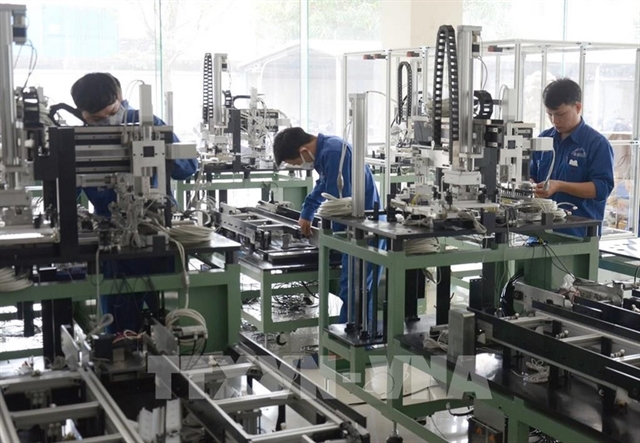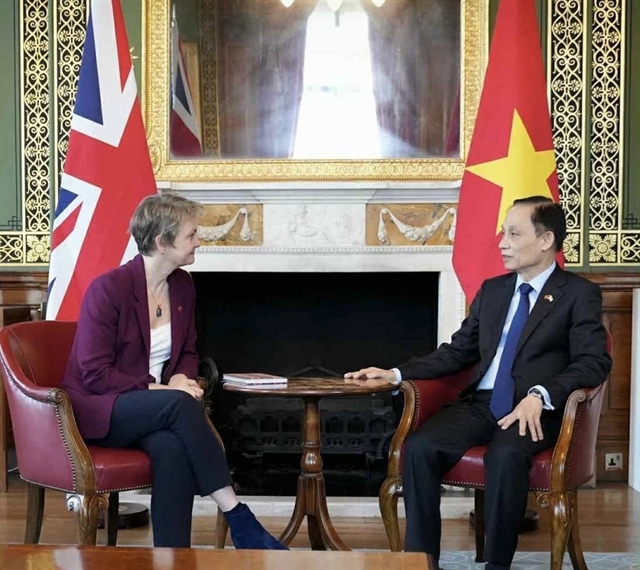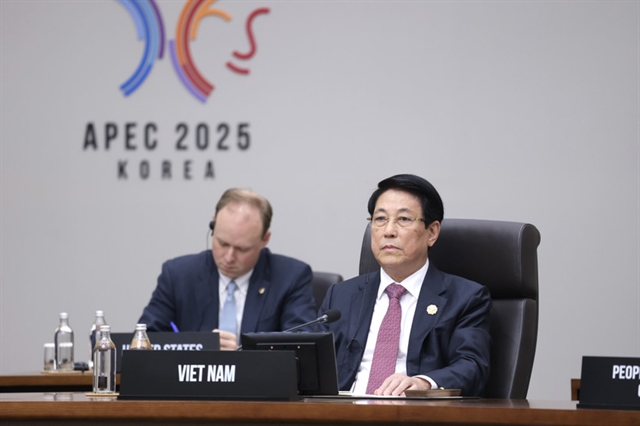 Economy
Economy

As Vietnamese telecom providers rush to launch their fourth generation (4G) services, the market for duly geared smart phones has also been heating up.
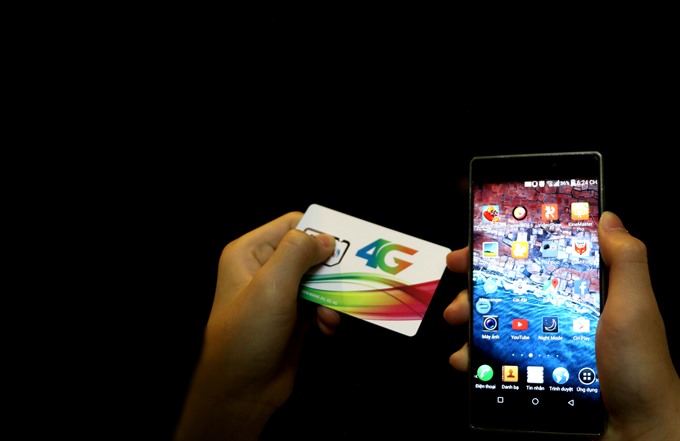 |
| A smartphone supports the 4G connection. - Photo www.dienmayxanh.com |
by Vũ Hoa
HÀ NỘI — As Vietnamese telecom providers rush to launch their fourth generation (4G) services, the market for duly geared smart phones has also been heating up.
The Global Mobile Suppliers Association (GSA) last month confirmed that LTE (Long Term Evolution, a 4G wireless communication standard) subscriptions accounted for 25.1 per cent of all mobile subscriptions globally.
There were 818 million new LTE subscriptions in 2016, compared to 596 million in 2015. LTE and WCDMA are now the only mobile technologies that are growing in subscriptions, although WCDMA subscriptions are experiencing slowing growth, the GSA said.
By the end of 2016, LTE subscriptions, according to Ovum data, stood at 1.920 billion compared to 1.102 billion in December 2015.
The Asia region continues to lead LTE adoption with a 59.1 per cent market share, although this is likely to be impacted in 2017 by accelerating adoption in other regions, especially in the Middle East (where LTE subscriptions grew 166 per cent year on year in 2016), Eastern Europe (132 per cent) as well as Africa, Latin America and the Caribbean (120 per cent).
GSA President Joe Barrett said: “Over the past year LTE subscriptions have grown substantially and we are now seeing all regions moving swiftly to adopt LTE as their primary mobile technology to deliver a true mobile broadband customer experience.
GSA continues to predict that LTE, LTE-Advanced and LTE-Advanced Pro subscriptions will overtake 3G/WCDMA-HSPA in 2019.”
 |
| The development of mobilephone broadband infrastructure in Việt Nam. — VNS Photo |
Another report from Informa has also forecast that the number of 4G users in the world would reach a billion this year.
Latching on to the global 4G boom, Vietnamese telecom giants have been racing to launch their networks.
Last October, the Ministry of Information and Communications granted 4G licences to four network providers: Viettel, Vinaphone, MobiFone and Gtel.
However, it is Viettel and Vinaphone who are competing to provide to their customers the faster, better quality 4G service. The other two are lagging behind.
The military-run Viettel officially launched its nationwide 4G service on Tuesday. It had announced earlier that it had set up more than 36,000 4G base transceiver stations (BTS) in just six months after receiving the licence.
“We have been able to quickly complete the infrastructure for the launch of 4G and help people catch up with the fourth industrial revolution,” said Tào Đức Thắng, Viettel’s deputy general director.
Their 4G network covers 704 districts, accounting for 99 per cent of the country’s localities, he added.
Thắng said Viettel’s speedy work was possible because of long-term preparation of infrastructure. Viettel has been the telecom provider with biggest fibre cable system in the country. Its total fibre cable length in the market can go around the earth eight times, he said.
Earlier, Viettel deputy general director Hoàng Sơn said their ambition was to popularise 4G services in all regions, not just urban areas.
The company has found that the growth of its 3G service in rural areas was double that of urban areas, becoming a foundation for 4G development.
“We will provide service packages at reasonable prices that will make 4G services become popular among all people,” Sơn said.
Hoàng Thị Út, a resident of Ngọc Hiển District in the southernmost province of Cà Mau, said her family members have been using 4G for their daily work and entertainment. (Viettel has piloted its 4G service in the nation’s remote areas)
Living in a floating home at the tip of the country, Út’s family are able to have a smart TV despite not having an Internet connection. The difficult terrain had earlier deterred telecom providers from offering wifi services to the people here.
The fast speed of Viettel’s 4G service has not only helped her enjoy smart TV, but also keep in touch with her husband when he is far away from home on offshore fishing trips.
“The cost of 4G service is reasonable for people in rural areas, and its speed is even faster than that of wifi sometimes, she said.
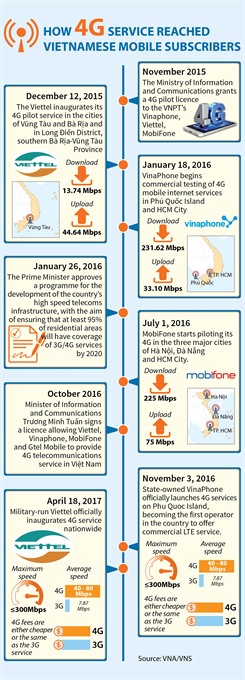 |
Vinaphone – the Viettel’s main rival in the race of launching 4G – has adopted different business strategies.
It was the first telecom provider to launch the 4G service in the Kiên Giang Province’s Phú Quốc Island in November 2016, just a week after receiving the licence.
However, while Viettel has targeted 4G service coverage in all urban, rural and remote areas at the time of launching, Vinaphone has focused on key localities in urban areas.
It has built 4G BTS in Hà Nội, HCM City, Bình Dương, Lâm Đồng, Bình Phước, Sóc Trăng, Hậu Giang, Đồng Nai, Tây Ninh, Bà Rịa Vũng Tàu, Cà Mau and Bạc Liêu in its first phase.
It is expected that by the end of this year, Vinaphone will expand its 4G coverage with around 15,000 BTS in all parts of the country.
Apart from building their 4G infrastructure, telecom providers have also improved their services.
Vinaphone said scale and investment strategy in Mobile Internet services would define their competitiveness this year. The price of 4G services could be similar or lower than those of 3G, it said.
Meanwhile, the two remaining telecom providers, MobiFone and Gtel, have been relatively quiet in the race. Their main activity has been to announce that customers can exchange their 3G SIM cards for 4G ones for free.
A MobiFone’s representative said they’ve built 4,500 4G BTS and expect to install another 8,000 in 53 provinces and cities this year. In the first phase, it would focus on the big cities of Hà Nội, HCM City, Hải Phòng, Cần Thơ and Đà Nẵng, he said, but did not reveal the exact time for launching the service.
The 4G technology has also established a new smart phone trend.
Big producers such as Samsung, Apple, Sony, HTC and Asus have introduced 4G smart phones in Viet Nam.
According to Thế giới di động (Mobile World) - one of the largest mobile phone and electronic product distribution chains in Việt Nam, 90 of 150 authorised smart phones sold in the country support the 4G connection, three times that of last year.
Samsung seems to be the leading producer of 4G smart phones in the local market. With the experience of providing 4G phones in South Korea as well as other big and demanding markets like the US, Europe and India since 2010, the company has a huge advantage over others.
As of now, the 4G technology has been integrated into 17 of 27 Samsung Galaxy smart phones in diverse market segments.
“Almost all Samsung smart phones, from high-end to the most popular models, have been equipped with 4G technology.
“For example, the Samsung J2 smart phone supports 4G technology at less than VNĐ2.7 million (US$120). Samsung aims to have its smart phone products with 4G accessible to middle and even low-income earners,” Lê Khôi Nguyên, Việt Nam Mobile Business Manager at Samsung Electronics, told Việt Nam News.
Nguyên said Samsung has also signed some co-operation contracts with Viettel to support 4G users in terms of products, pricing and technical support.
Samsung has really invested in the 4G smart phone with a smart phone costing less than VNĐ3 million, while its rivals support 4G in the middle market segment of VNĐ7-8 million each.
Đặng Quốc Cường, Marketing Director of Oppo Việt Nam, said they have brought 4G smart phones to Việt Nam and stopped importing 2G and 3G smart phones.
Cường believed that smart phones with 4G support would see high growth rates as many Vietnamese users will change or buy new smart phones, especially in the VNĐ5-6 million price segment.
“I think that the coverage of 4G smart phones in Việt Nam will increase rapidly and catch up quickly with modern countries in the world,” he said.
Customers will soon consider 4G an indispensable criterion for their decision to buy a smart phone, he added.
He also said that his company can produce 4G smart phones at price of around VNĐ2.5 million (over $100), but other markets have shown that 4G users demand high speed internet for their work and entertainment. The devices should have big screens and strong configuration. The devices would be priced at more than $200 each to meet these requirements.
Trương Lê Quốc Tuấn, Infinix representative, said there would be fierce competition among cheap 4G smart phones in the market. People will still like attractive designs, so Infinix is offering cheap 4G smart phones in the market, he said.
Sharing these ideas, Kiều Minh Phương, manager of the FPT Shop on Hà Nội’s Hai Bà Trưng Street told Việt Nam News that customers who paid attention to 4G were typically young people.
They have plenty of smart phone choices, he said.
“Most new smart phones have 4G LTE support at different prices starting from VNĐ2 million. Samsung, Lenovo, Obi, CoolPad and Mobiistar are all in the market,” Phương said. — VNS

